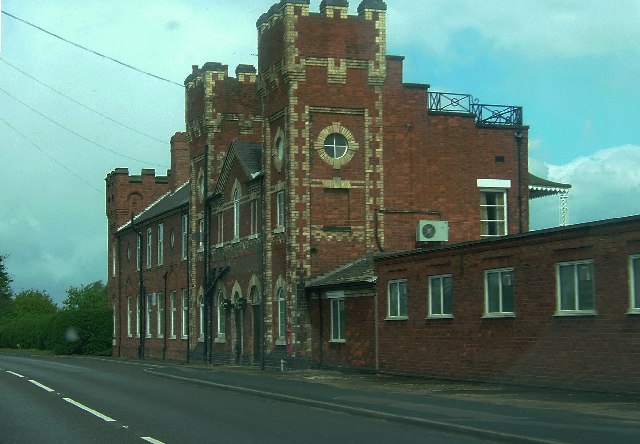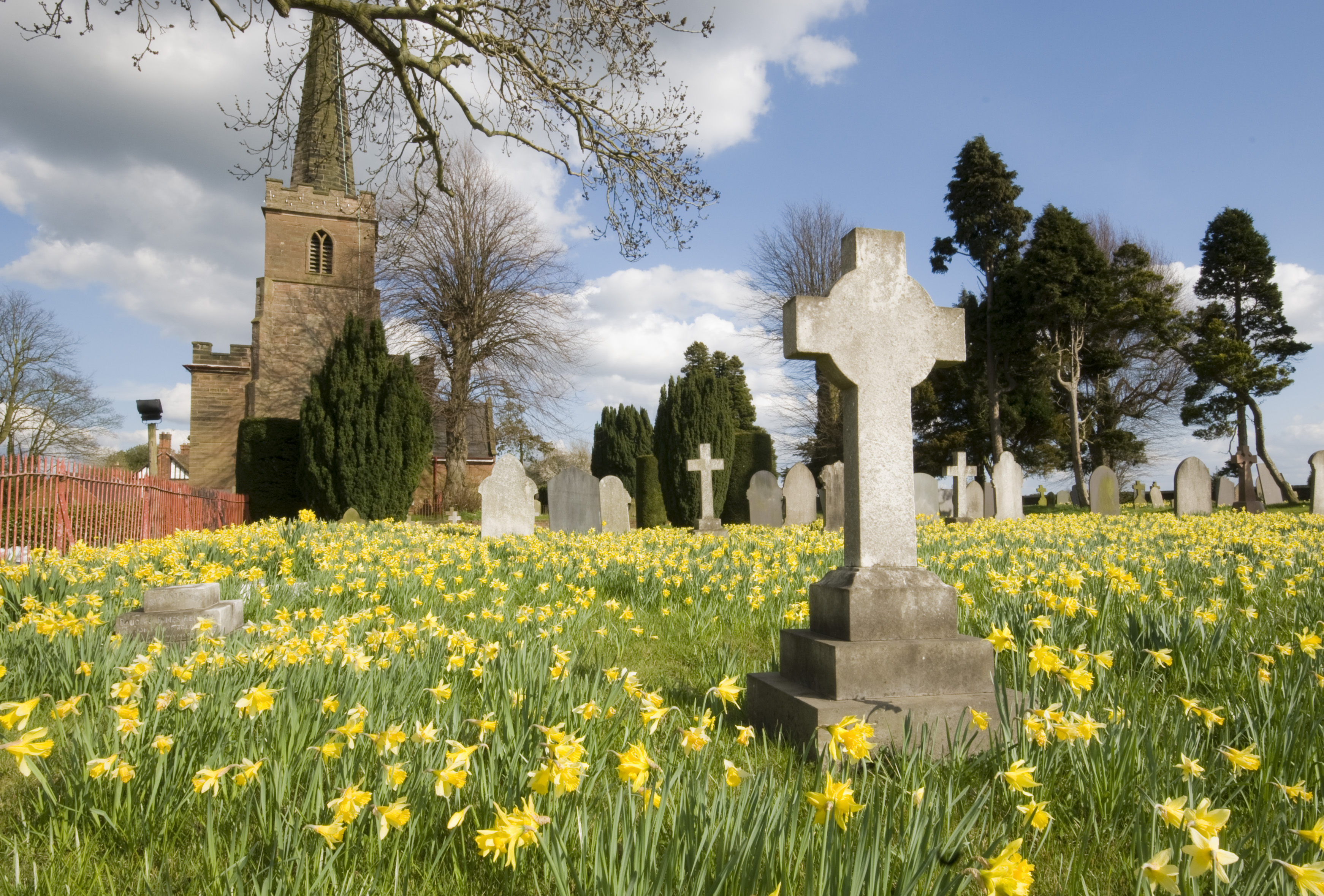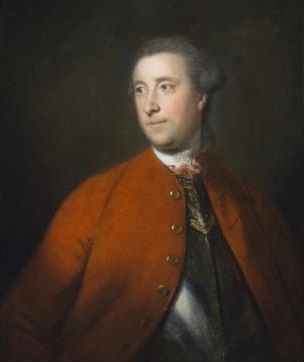|
Whittington Barracks
DMS Whittington, otherwise known as Defence Medical Services Whittington (formerly Whittington Barracks), is a military base in Whittington, Staffordshire, near Lichfield in England. It is home to the Staffordshire Regiment Museum, the Headquarters of the Surgeon General and subordinate medical headquarters, and the location of the Defence College of Health Education and Training. Early history The barracks were constructed on Whittington Heath. The heath had been the site of the Lichfield races which had moved from Fradley in 1702. During the 18th century they were one of the largest and well attended race meetings in the Midlands and in 1773 a grandstand was erected near the Lichfield- Tamworth Road. However, during the 19th century the popularity of the races dwindled, and military use of the heath grew. The War Office approached the Marquess of Anglesey in 1875 to buy the heath for the building of a barracks. Construction started in 1877 and the formal handing over of the n ... [...More Info...] [...Related Items...] OR: [Wikipedia] [Google] [Baidu] |
Whittington, Staffordshire
Whittington is a village and civil parish which lies approximately 3 miles south east of Lichfield, in the Lichfield district of Staffordshire, England. According to the 2001 census it had a population of 2,591, increasing to 2,603 at the 2011 Census. The parish council is a joint one with Fisherwick. The Coventry Canal borders the village to the north and east. History The place name of Whittington derives from the Old English for an estate associated with a man called Hwīta. Hwīta was an Anglo-Saxon personal name meaning 'white', given to someone with fair hair or pale complexion. Whittington formed part of the Bishop of Lichfield’s great manorial estate, which covered much of south-east Staffordshire. Known as the Manor of Longdon, it had been created for the bishop of Lichfield from the time of the Saxons, they remained the lord of the manor until 1546 when the bishop was forced to surrender it to Sir William Paget, one of Henry VIII's principal Secretaries of State, wh ... [...More Info...] [...Related Items...] OR: [Wikipedia] [Google] [Baidu] |
64th (2nd Staffordshire) Regiment Of Foot
The 64th (2nd Staffordshire) Regiment of Foot was an infantry regiment of the British Army. The regiment was created as the 2nd Battalion, 11th Regiment of Foot in 1756, redesignated as the 64th Regiment of Foot in 1758, and took a county title as the 64th (2nd Staffordshire) Regiment of Foot in 1782. Following the Cardwell Reforms the regiment amalgamated with the 98th (Prince of Wales's) Regiment of Foot to become The Prince of Wales's (North Staffordshire Regiment) in 1881. In the new regiment the 64th Foot became the 1st Battalion due to its seniority over the 98th Foot. Although the 64th Foot fought in many of the major conflicts of the late 18th and early 19th centuries, it was normally in the more minor theatres of these conflicts. During the Seven Years' War it served in the West Indies; in the Napoleonic Wars, its role was limited, again, to the West Indies and South America. In the mid-19th century, it fought in the Anglo-Persian War and the Indian Rebellion of 1857, ... [...More Info...] [...Related Items...] OR: [Wikipedia] [Google] [Baidu] |
Provost Marshal
Provost marshal is a title given to a person in charge of a group of Military Police (MP). The title originated with an older term for MPs, '' provosts'', from the Old French ''prévost'' (Modern French ''prévôt''). While a provost marshal is now usually a senior commissioned officer, they may be a person of any rank who commands any number of MPs; historically, the title was sometimes applied to civilian officials, especially under conditions of martial law, or when a military force had day-to-day responsibility for some or all aspects of civilian law enforcement (such as some British colonies). A provost marshal may also oversee security services, imprisonment, fire/emergency services and ambulances. British Armed Forces In the British Armed Forces, the provost marshal is the head of the military police of each service, with the senior military police officers at lower levels being titled deputy or assistant provost marshals. In many cases the provost marshal is in charge ... [...More Info...] [...Related Items...] OR: [Wikipedia] [Google] [Baidu] |
Highland Park, Illinois
Highland Park is a suburban city located in the southeastern part of Lake County, Illinois, United States, about north of downtown Chicago. Per the 2020 census, the population was 30,176. Highland Park is one of several municipalities located on the North Shore of the Chicago metropolitan area. History A traveler in the area in 1833 described visiting a village of bark-covered structures where he ate roasted corn with a chief named Nic-sa-mah at a site likely located south of present-day Clavey Road and east of the Edens Expressway. In 1847, two German immigrants, John Hettinger and John Peterman founded a town along Lake Michigan, which they called St. John's. Soon, the town was abandoned, due to questions regarding ownership of the land. Three years later, another German Immigrant, Jacob Clinton Bloom, founded Port Clinton, which happened to be just south of St. John's. Port Clinton was described by Elijah Middlebrook Haines as "one of the most promising villages in the cit ... [...More Info...] [...Related Items...] OR: [Wikipedia] [Google] [Baidu] |
Press & Sun-Bulletin
The ''Press & Sun-Bulletin'' is a daily newspaper serving the area around Binghamton, New York. It was formed by the 1985 merger of ''The Evening Press'' (which was known as ''The Binghamton Press'' prior to 1960) and ''The Sun-Bulletin''. It is owned by Gannett Gannett Co., Inc. () is an American mass media holding company headquartered in McLean, Virginia, in the Washington, D.C., metropolitan area. who purchased ''The Binghamton Press'' in 1943 and ''The Sun-Bulletin'' in 1971. References External links Press & Sun-Bulletin [...More Info...] [...Related Items...] OR: [Wikipedia] [Google] [Baidu] |
Military Prison
A military prison is a prison operated by a military. Military prisons are used variously to house prisoners of war, unlawful combatants, those whose freedom is deemed a national security risk by the military or national authorities, and members of the military found guilty of a serious crime. Thus, military prisons are of two types: penal, for punishing and attempting to reform members of the military who have committed an offense, and confinement-oriented, where captured enemy combatants are confined for military reasons until hostilities cease. Military jail Most militaries have some sort of military police unit operating at the divisional level or below to perform many of the same functions as civilian police, from traffic-control to the arrest of violent offenders and the supervision of detainees and prisoners of war. Australia The Australian Defence Force states it has no prisons. Instead they have a single facility, the Defence Force Correctional Establishment, which aim ... [...More Info...] [...Related Items...] OR: [Wikipedia] [Google] [Baidu] |
Oxford University Press
Oxford University Press (OUP) is the university press of the University of Oxford. It is the largest university press in the world, and its printing history dates back to the 1480s. Having been officially granted the legal right to print books by decree in 1586, it is the second oldest university press after Cambridge University Press. It is a department of the University of Oxford and is governed by a group of 15 academics known as the Delegates of the Press, who are appointed by the vice-chancellor of the University of Oxford. The Delegates of the Press are led by the Secretary to the Delegates, who serves as OUP's chief executive and as its major representative on other university bodies. Oxford University Press has had a similar governance structure since the 17th century. The press is located on Walton Street, Oxford, opposite Somerville College, in the inner suburb of Jericho. For the last 500 years, OUP has primarily focused on the publication of pedagogical texts and ... [...More Info...] [...Related Items...] OR: [Wikipedia] [Google] [Baidu] |
Oxford English Dictionary
The ''Oxford English Dictionary'' (''OED'') is the first and foundational historical dictionary of the English language, published by Oxford University Press (OUP). It traces the historical development of the English language, providing a comprehensive resource to scholars and academic researchers, as well as describing usage in its many variations throughout the world. Work began on the dictionary in 1857, but it was only in 1884 that it began to be published in unbound fascicles as work continued on the project, under the name of ''A New English Dictionary on Historical Principles; Founded Mainly on the Materials Collected by The Philological Society''. In 1895, the title ''The Oxford English Dictionary'' was first used unofficially on the covers of the series, and in 1928 the full dictionary was republished in 10 bound volumes. In 1933, the title ''The Oxford English Dictionary'' fully replaced the former name in all occurrences in its reprinting as 12 volumes with a one-v ... [...More Info...] [...Related Items...] OR: [Wikipedia] [Google] [Baidu] |
Time (magazine)
''Time'' (stylized in all caps) is an American news magazine based in New York City. For nearly a century, it was published Weekly newspaper, weekly, but starting in March 2020 it transitioned to every other week. It was first published in New York City on March 3, 1923, and for many years it was run by its influential co-founder, Henry Luce. A European edition (''Time Europe'', formerly known as ''Time Atlantic'') is published in London and also covers the Middle East, Africa, and, since 2003, Latin America. An Asian edition (''Time Asia'') is based in Hong Kong. The South Pacific edition, which covers Australia, New Zealand, and the Pacific Islands, is based in Sydney. Since 2018, ''Time'' has been published by Time USA, LLC, owned by Marc Benioff, who acquired it from Meredith Corporation. History ''Time'' has been based in New York City since its first issue published on March 3, 1923, by Briton Hadden and Henry Luce. It was the first weekly news magazine in the United St ... [...More Info...] [...Related Items...] OR: [Wikipedia] [Google] [Baidu] |
The Times
''The Times'' is a British daily national newspaper based in London. It began in 1785 under the title ''The Daily Universal Register'', adopting its current name on 1 January 1788. ''The Times'' and its sister paper ''The Sunday Times'' (founded in 1821) are published by Times Newspapers, since 1981 a subsidiary of News UK, in turn wholly owned by News Corp. ''The Times'' and ''The Sunday Times'', which do not share editorial staff, were founded independently and have only had common ownership since 1966. In general, the political position of ''The Times'' is considered to be centre-right. ''The Times'' is the first newspaper to have borne that name, lending it to numerous other papers around the world, such as ''The Times of India'', ''The New York Times'', and more recently, digital-first publications such as TheTimesBlog.com (Since 2017). In countries where these other titles are popular, the newspaper is often referred to as , or as , although the newspaper is of nationa ... [...More Info...] [...Related Items...] OR: [Wikipedia] [Google] [Baidu] |
United States Army
The United States Army (USA) is the land service branch of the United States Armed Forces. It is one of the eight U.S. uniformed services, and is designated as the Army of the United States in the U.S. Constitution.Article II, section 2, clause 1 of the United States Constitution (1789). See alsTitle 10, Subtitle B, Chapter 301, Section 3001 The oldest and most senior branch of the U.S. military in order of precedence, the modern U.S. Army has its roots in the Continental Army, which was formed 14 June 1775 to fight the American Revolutionary War (1775–1783)—before the United States was established as a country. After the Revolutionary War, the Congress of the Confederation created the United States Army on 3 June 1784 to replace the disbanded Continental Army.Library of CongressJournals of the Continental Congress, Volume 27/ref> The United States Army considers itself to be a continuation of the Continental Army, and thus considers its institutional inception to be th ... [...More Info...] [...Related Items...] OR: [Wikipedia] [Google] [Baidu] |



.jpg)

